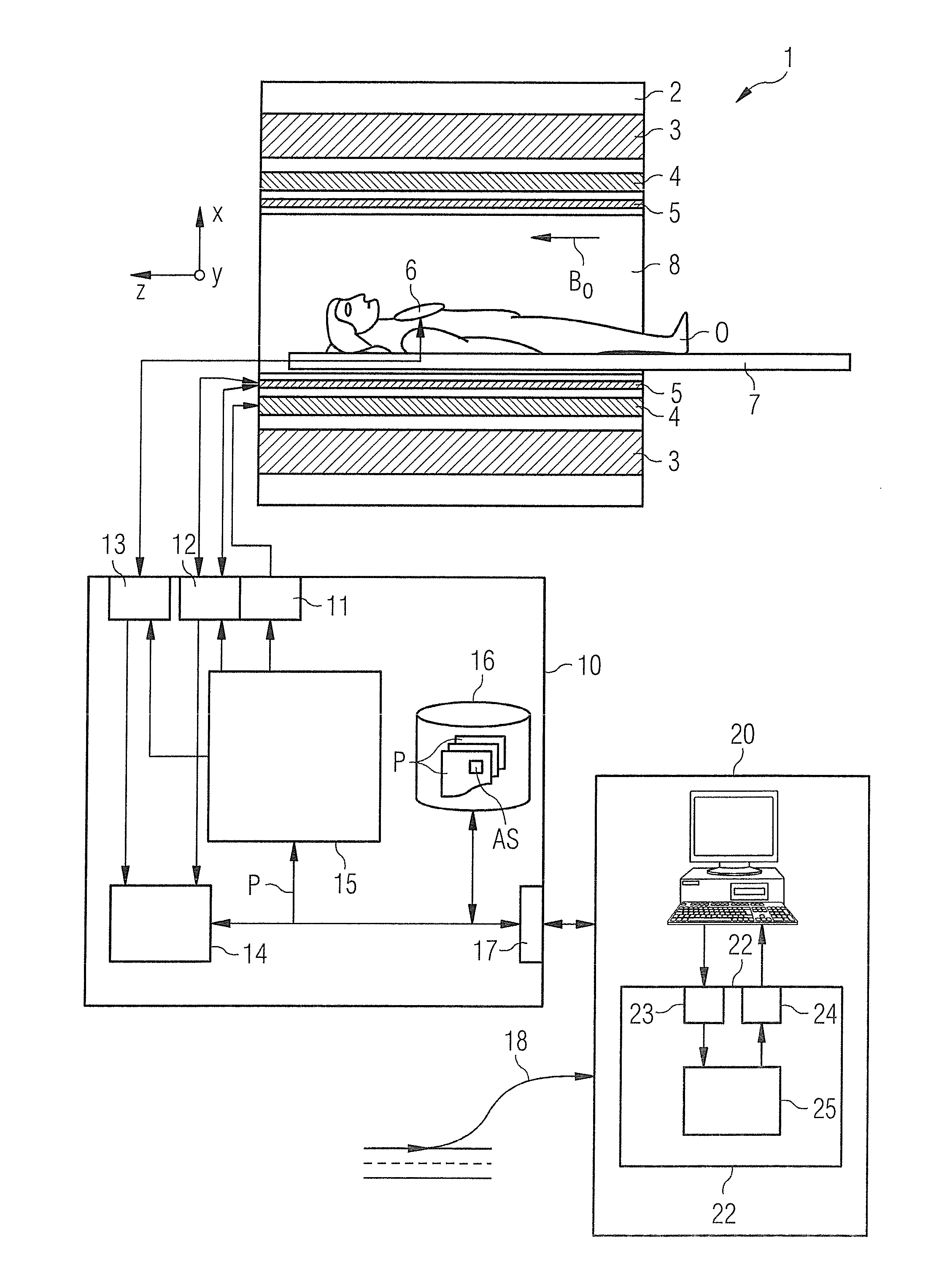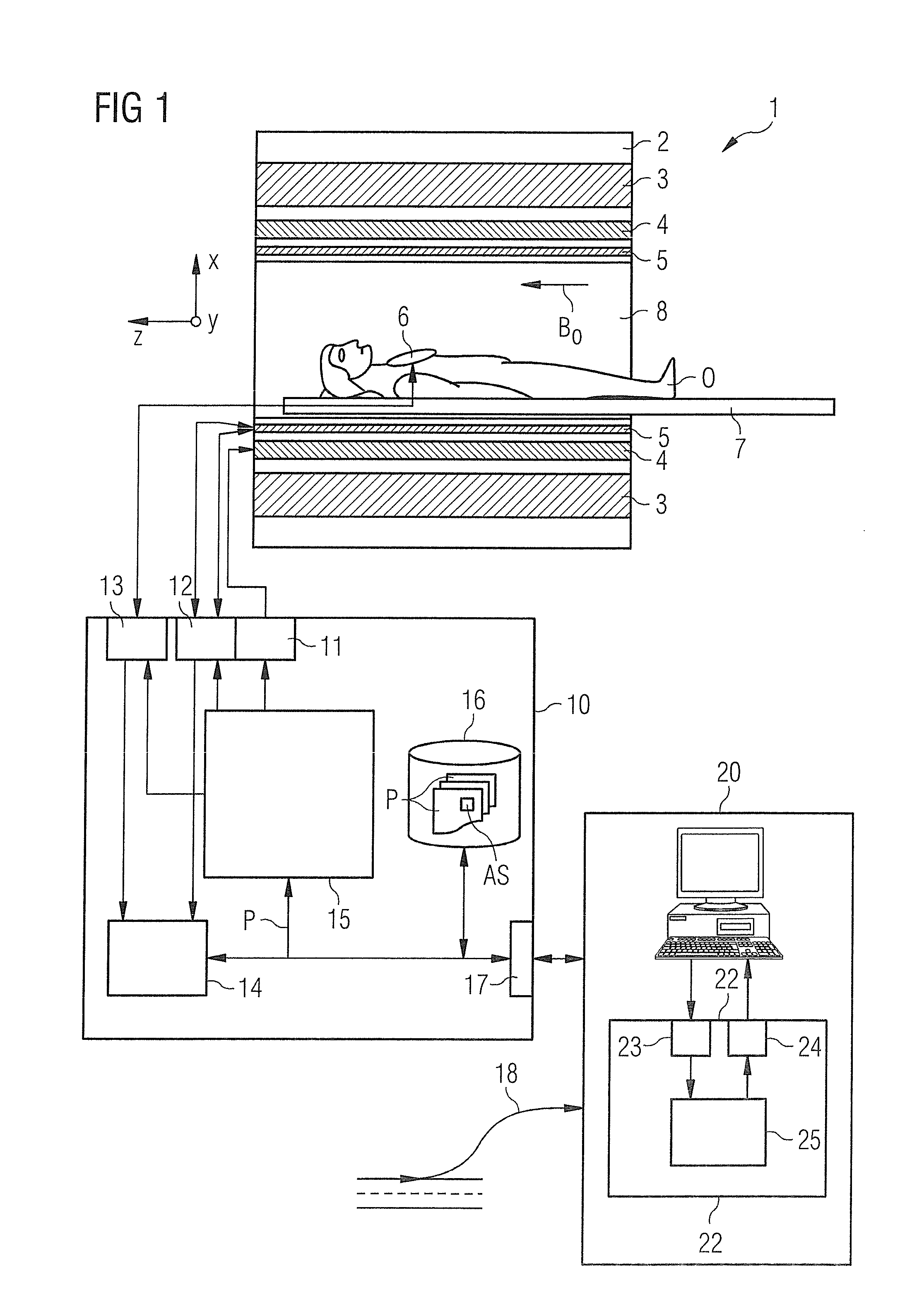Determination of a control sequence for a magnetic resonance imaging system
a magnetic resonance imaging and control sequence technology, applied in the direction of magnetic measurement, geological measurement, reradiation, etc., can solve the problem of severe generation of perceptible nois
- Summary
- Abstract
- Description
- Claims
- Application Information
AI Technical Summary
Benefits of technology
Problems solved by technology
Method used
Image
Examples
Embodiment Construction
[0088]A magnetic resonance imaging system 1 according to the invention is shown in schematic form in FIG. 1. The imaging system 1 includes the actual magnetic resonance scanner (data acquisition unit) 2 with a measurement space or patient tunnel 8 located therein. A bed 7 can be driven into this patient tunnel 8 so that a patient O or test subject thereupon can be supported at a specific position within the magnetic resonance scanner 2 relative to the gradient coil system 4 arranged therein during an examination or can be driven between different positions during a measurement (data acquisition).
[0089]Basic components of the magnetic resonance scanner 2 include a basic field magnet 3 to generate a basic magnetic field B0, the gradient coil system 4 with gradient coils in order to apply nearly any gradient magnetic fields in the x-, y- and z-directions, and a whole-body radio-frequency coil 5. The reception of magnetic resonance signals produced in the test subject or examination sub...
PUM
 Login to View More
Login to View More Abstract
Description
Claims
Application Information
 Login to View More
Login to View More - R&D
- Intellectual Property
- Life Sciences
- Materials
- Tech Scout
- Unparalleled Data Quality
- Higher Quality Content
- 60% Fewer Hallucinations
Browse by: Latest US Patents, China's latest patents, Technical Efficacy Thesaurus, Application Domain, Technology Topic, Popular Technical Reports.
© 2025 PatSnap. All rights reserved.Legal|Privacy policy|Modern Slavery Act Transparency Statement|Sitemap|About US| Contact US: help@patsnap.com



